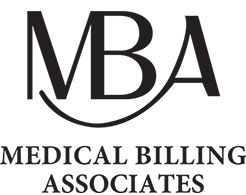Coding Error Can Be Costly
With the changes currently taking place in physician payment, accurate and thorough ICD-10-CM and CPT-4 coding is more important than ever.
Getting physicians and staff to accurately document and code the services performed are key issues. Physicians must use the appropriate document and code the services from 001.0 to v82.9, to identify diagnosis, symptoms, complaints, or other reasons for the service or procedure performed. Although the ICD-10-CM code does not determine a higher dollar amount for payment, it does influence whether or not payment is made at all, for the procedures submitted.
When reporting ICD-10-CM codes, a diagnosis should be documented to the highest level of specificity. A three-digit code should be reported only if there are no other four or five-digit codes within that category to describe the diagnosis more specifically.
The diagnosis code must correspond with the procedure code, or it may result in a delay or denial of payment.
Many practices use very general CPT-4 codes, and may be accepting a lower level of reimbursement. Incorrect coding on claim forms by inexperienced office personnel is a risky practice. Many physicians have their claims down-coded because their staff lacks the sufficient ICD-10-CM and CPT-4 coding training. An understanding of both types of coding must precede the knowledge of how to integrate them.
Billing –
Hospital
The 3 × 5 card should have dates of service (H&P or Consult) referring physician, admit and discharge dates, and diagnosis and procedure codes, insurance information on patient if not stated on card. Precert number (PSR) for Medicaid patients must be attached for billing.
Outpatient/Office
A superbill with patients name, demographics (address, phone, DOB, and SSN) insurance (copy of front and back of medical card, subscriber’s name and DOB if other than the patient), CPT and ICD-10-Cm codes. Any progress note if accident or workers comp related.
Home Health and Nursing Home Visits
A superbill with patients name, demographics, insurance, CPT and ICD-10-Cm codes.
Questions
All questions are to be directed to MBA.
Payments –
Insurance
Checks are received by you and deposited by you. Your office will forward to MBA any EOBs and check stubs. If no explanation is available, a copy of the check itself is needed for posting.
Patient
Checks/Cash are received by you and deposited by you. Your office will forward to MBA any check stub or billing receipt. If no explanation is available, a copy of the check itself is needed for posting.
Balancing
MBA advises practice to have a system in place to balance deposits and postings. This can be accomplished by daysheets and deposit slips accountability.
Questions –
Insurance and Patient
MBA will handle all billing questions from insurance companies and patients. MBA will refer back to your office any and all questions related to medical care.
